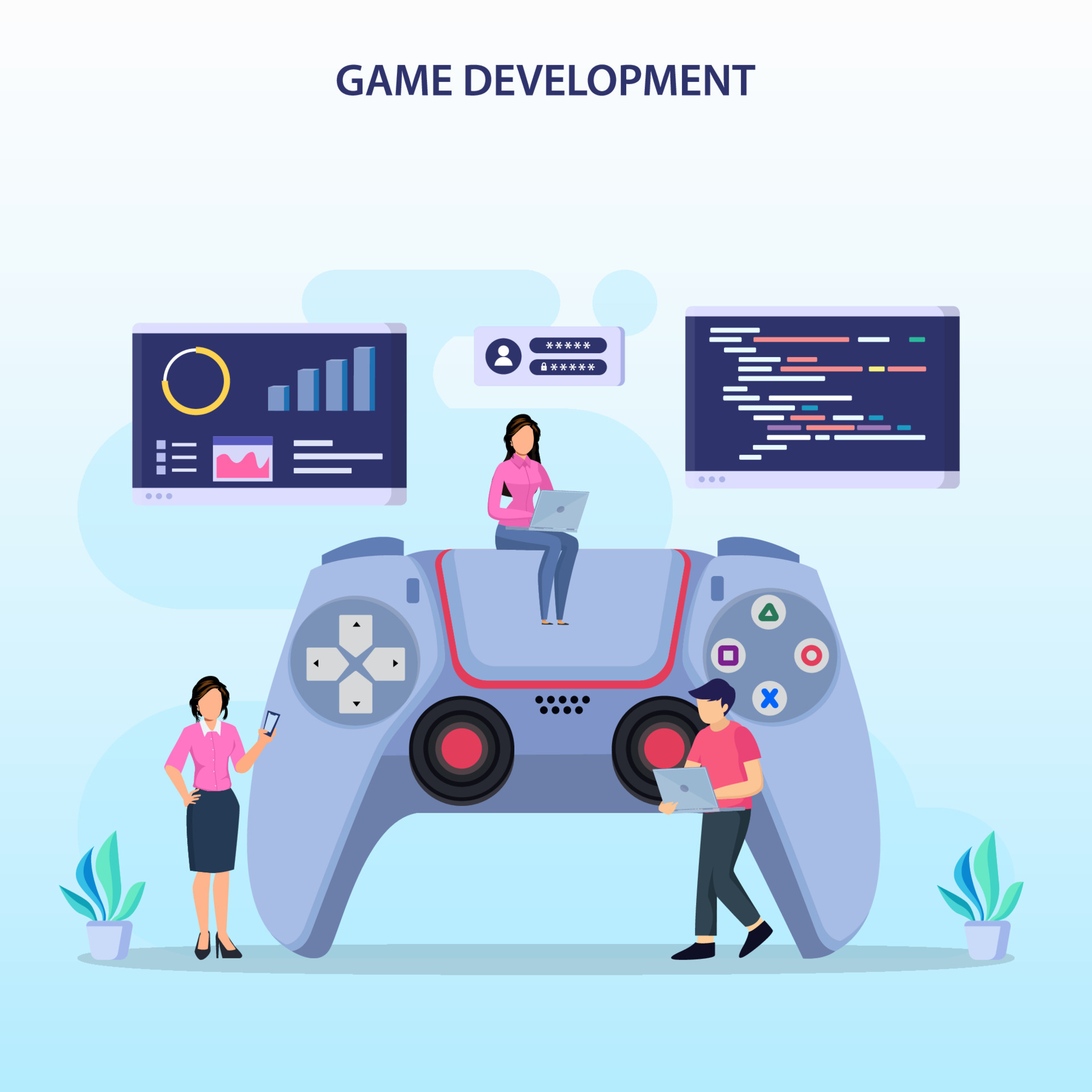"The Intersection of Technology and Creativity: Exploring Modern Game Design"
- The Intersection of Technology and Creativity:
- Exploring Modern Game Design

Introduction- Developing, designing, and honing interactive player experiences for digital gaming environments is the process of modern game design.
- A multidisciplinary approach is employed to create immersive and captivating experiences, integrating aspects of psychology, art, storytelling, technology, and game mechanics.
- With the advent of mobile games, virtual reality (VR), augmented reality (AR), and interactive storytelling, game design has evolved beyond the confines of traditional video games.
- Iterative design approaches, which entail designers continuously testing, refining, and testing game mechanics, aesthetics, and narratives based on player input and data analysis, are common in modern game design.
- In order to provide players with distinctive and unforgettable experiences, it embraces creativity and experimentation while pushing the bounds of conventional game design standards.
- Cultural, technological, and societal developments have an impact on modern game design, which reflects the changing preferences, tastes, and expectations of players in the current gaming environment.
The Role of Technology in Modern Game Design Emerging Technologies:
Emerging Technologies:- The options for game creation have increased with the introduction of cutting-edge technology like virtual reality (VR), augmented reality (AR), and cloud gaming.
- While cloud gaming offers seamless access to games across various devices, virtual reality and augmented reality offer immersive experiences.
Enhanced Gameplay Machines:- The use of complex gaming mechanics, such dynamic AI behaviour, generative content creation, and realistic physics simulations, is made possible by technology.
- The player's gameplay is made richer and more interesting by these mechanisms.
Accessibility and Inclusivity:- Enhancing accessibility and inclusivity in gaming has been made possible in large part by technology.
- More players—including those with disabilities—can enjoy features like adaptive difficulty levels, subtitles, and customisable controls.
Cross-Platform Integration:- Players may now access their gaming experiences across several devices thanks to seamless cross-platform integration made possible by technological advancements.
- Cross-platform progression and gameplay increase user convenience and flexibility while promoting a more diverse gaming community.
Importance of creativity in game development Innovation and differentiation:
Innovation and differentiation:- Innovation in game production is fuelled by creativity, which pushes boundaries and opens up new avenues.
- Novel gaming elements, visual aesthetics, narrative approaches, and game mechanics distinguish titles from one another and foster industry expansion.
Emotional Impact:- Game makers can arouse players' emotions and connect with them on a deeper level by using creativity.
- The whole player experience is improved by well-written stories, character development, and immersive settings that arouse a variety of feelings, from joy and excitement to sorrow and empathy.
Engagement and Immersion:- Player immersion and involvement in the game world are improved by creative components.
- Gamers' attention is captured and drawn further into the gaming experience by engaging stories, attractive graphics, immersive sound design, and engaging gameplay mechanics.
Player Empowerment:- Through chances for self-expression, exploration, and decision-making within the game world, creative game design empowers players.
- Players have a sense of agency and ownership over their gaming experiences thanks to player-driven gameplay features, branching stories, and open-world landscapes.

- Developing, designing, and honing interactive player experiences for digital gaming environments is the process of modern game design.
- A multidisciplinary approach is employed to create immersive and captivating experiences, integrating aspects of psychology, art, storytelling, technology, and game mechanics.
- With the advent of mobile games, virtual reality (VR), augmented reality (AR), and interactive storytelling, game design has evolved beyond the confines of traditional video games.
- Iterative design approaches, which entail designers continuously testing, refining, and testing game mechanics, aesthetics, and narratives based on player input and data analysis, are common in modern game design.
- In order to provide players with distinctive and unforgettable experiences, it embraces creativity and experimentation while pushing the bounds of conventional game design standards.
- Cultural, technological, and societal developments have an impact on modern game design, which reflects the changing preferences, tastes, and expectations of players in the current gaming environment.
The Role of Technology in Modern Game Design

Emerging Technologies:
- The options for game creation have increased with the introduction of cutting-edge technology like virtual reality (VR), augmented reality (AR), and cloud gaming.
- While cloud gaming offers seamless access to games across various devices, virtual reality and augmented reality offer immersive experiences.
Enhanced Gameplay Machines:
- The use of complex gaming mechanics, such dynamic AI behaviour, generative content creation, and realistic physics simulations, is made possible by technology.
- The player's gameplay is made richer and more interesting by these mechanisms.
Accessibility and Inclusivity:
- Enhancing accessibility and inclusivity in gaming has been made possible in large part by technology.
- More players—including those with disabilities—can enjoy features like adaptive difficulty levels, subtitles, and customisable controls.
Cross-Platform Integration:
- Players may now access their gaming experiences across several devices thanks to seamless cross-platform integration made possible by technological advancements.
- Cross-platform progression and gameplay increase user convenience and flexibility while promoting a more diverse gaming community.
Importance of creativity in game development

Innovation and differentiation:
- Innovation in game production is fuelled by creativity, which pushes boundaries and opens up new avenues.
- Novel gaming elements, visual aesthetics, narrative approaches, and game mechanics distinguish titles from one another and foster industry expansion.
Emotional Impact:
- Game makers can arouse players' emotions and connect with them on a deeper level by using creativity.
- The whole player experience is improved by well-written stories, character development, and immersive settings that arouse a variety of feelings, from joy and excitement to sorrow and empathy.
Engagement and Immersion:
- Player immersion and involvement in the game world are improved by creative components.
- Gamers' attention is captured and drawn further into the gaming experience by engaging stories, attractive graphics, immersive sound design, and engaging gameplay mechanics.
Player Empowerment:
- Through chances for self-expression, exploration, and decision-making within the game world, creative game design empowers players.
- Players have a sense of agency and ownership over their gaming experiences thanks to player-driven gameplay features, branching stories, and open-world landscapes.
Comments
Post a Comment